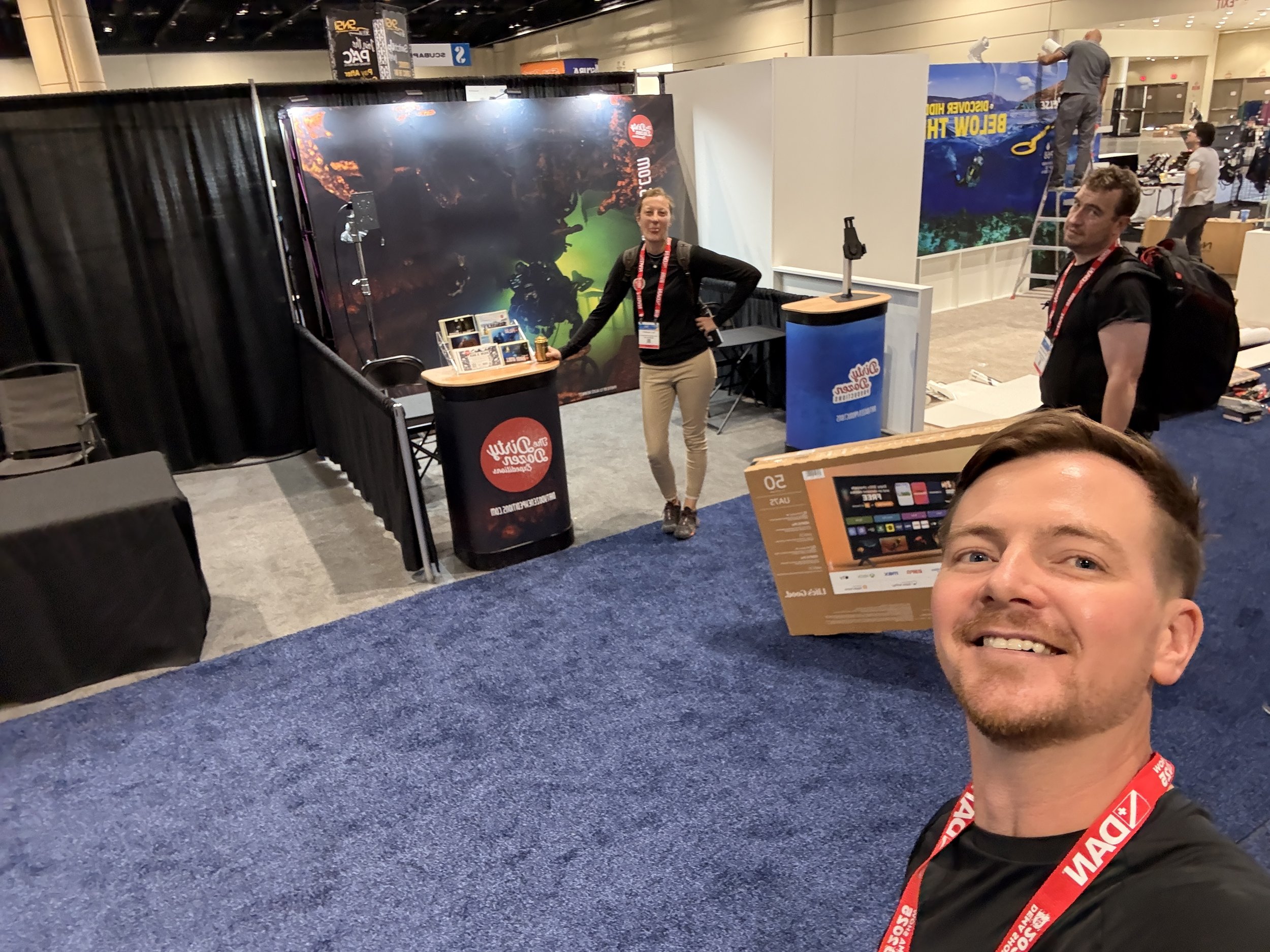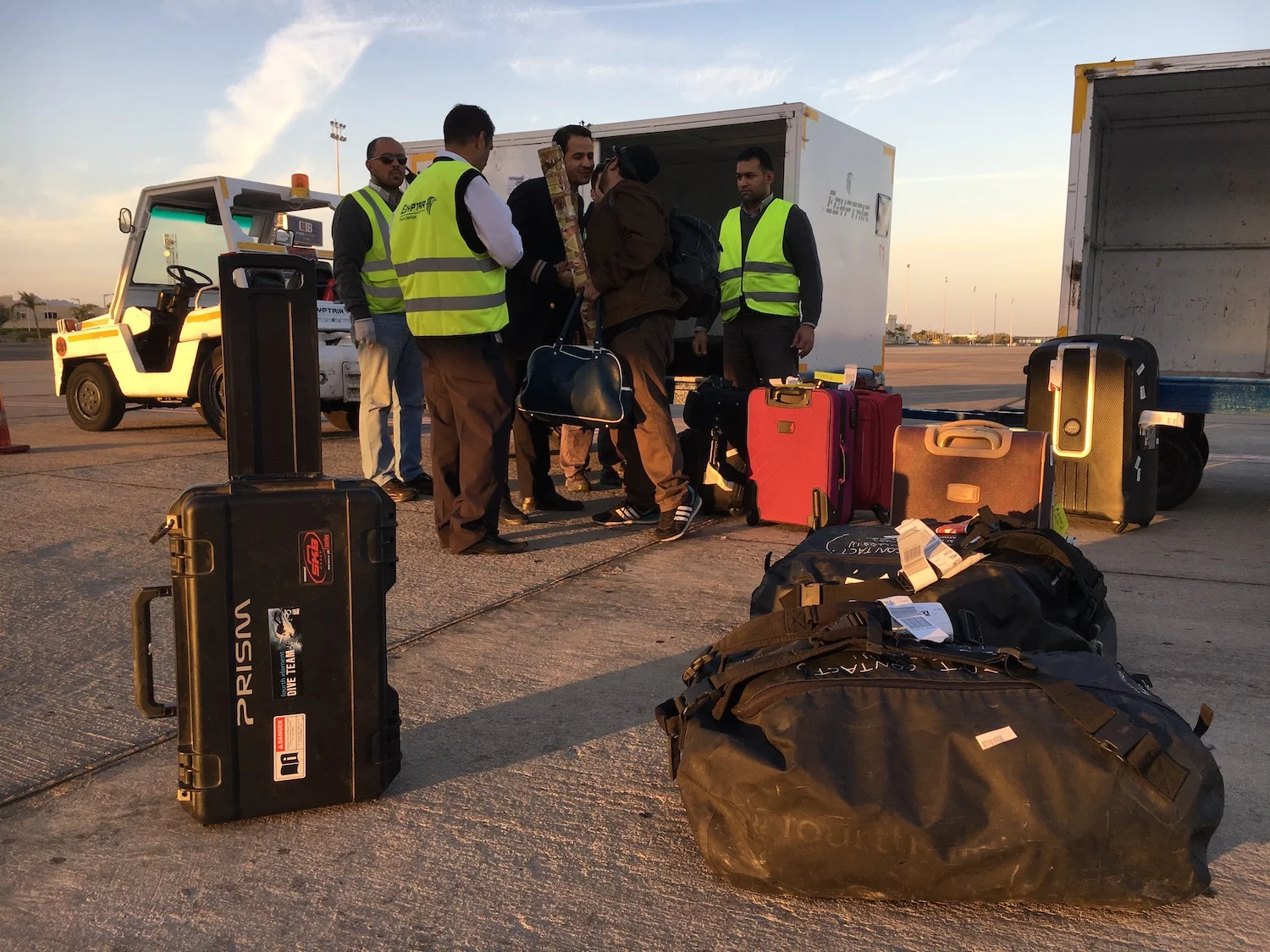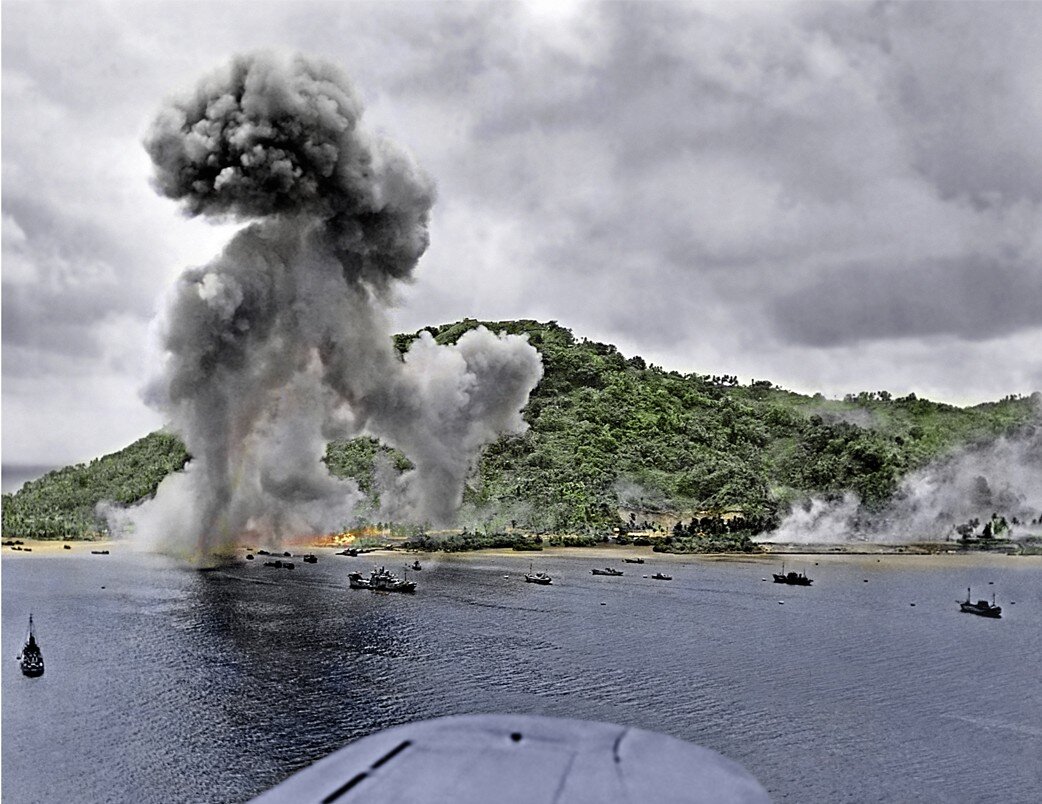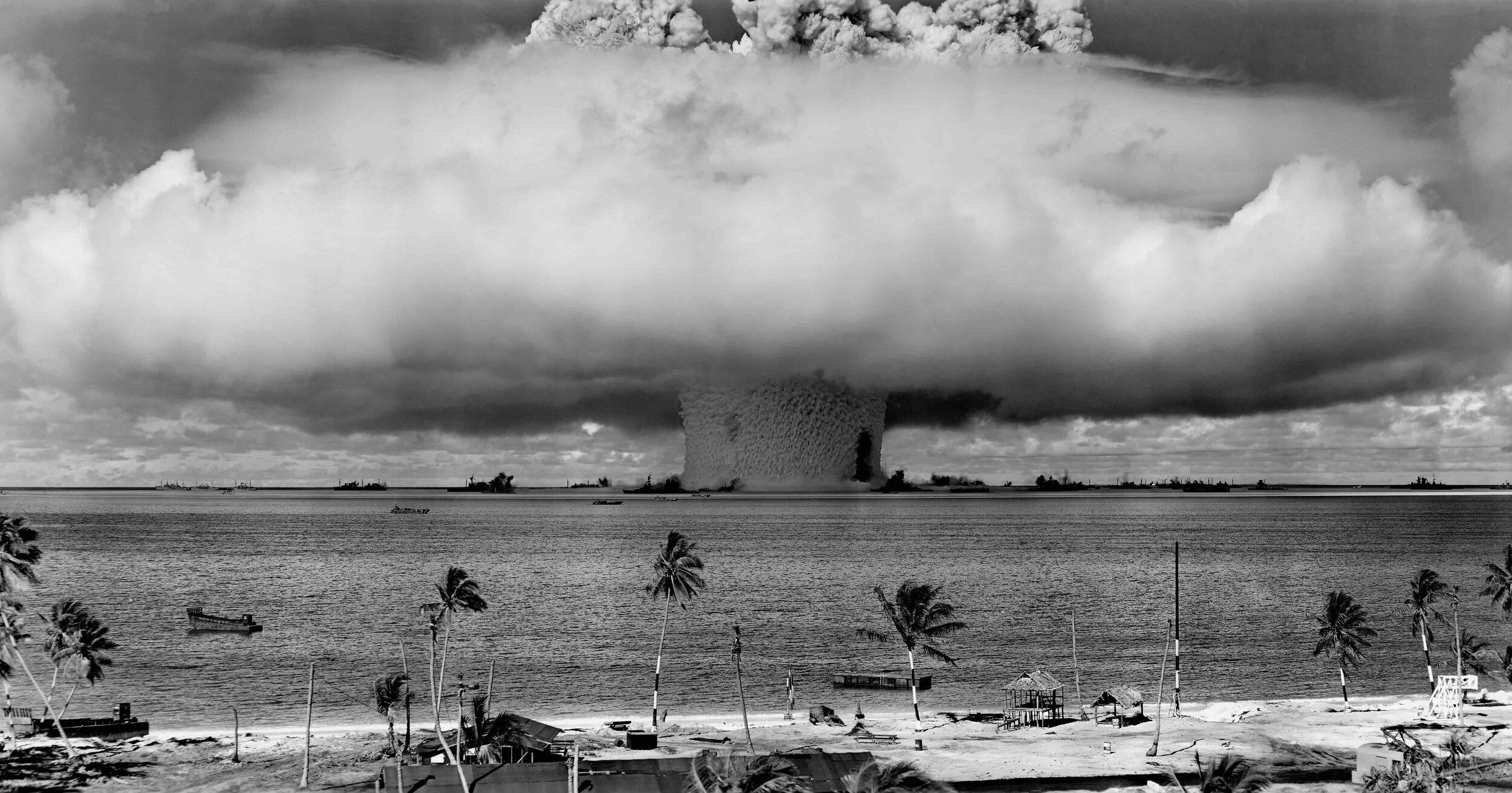It’s no secret, technical diving is gear-intensive and if you’re packing for Truk Lagoon or Bikini Atoll — some of the remotest diving destinations in the world — you want to have all your essentials with you. Add a sophisticated underwater camera setup and a closed-circuit rebreather, and you have a recipe for sleepless nights wondering just how much you can stretch the bounds of your luggage allowance.
Why Truk and Bikini Are Very Different Locations
A misconception I encounter on a regular basis is that wreck diving in Truk Lagoon and Bikini Atoll is essentially the same. But this couldn’t be further from the truth.
Of course, there are some similarities: both locations are wreck diving meccas, and both are located in the Pacific — albeit 1,563 km apart (a mere drop in the ocean in Pacific terms but another matter entirely when it comes to boat travel).
Besides those basic shared qualities, the ways in which these destinations differ are varied and encompass history, politics, diving depths, required diver skill levels, the type of wrecks, and more.
Let’s take a closer look at some of those differences.
Operation Hailstone, 17-18 February 1944
Operation Crossroads, 1-25 July 1946
Operation Hailstone vs Operation Crossroads
A key reason why people equate Truk to Bikini and vice versa is that both have a US military operation attached to their names and histories.
But while Operation Hailstone in Truk Lagoon was an instance of naval and military warfare, Operation Crossroads in Bikini Atoll was a controlled test of nuclear weapons.
Operation Hailstone
On the 17th of February 1944, US forces let loose on Truk, then the largest Japanese naval base in the entire Pacific. Having discovered the base during a reconnaissance flight, the US was eager to exert its power and gain control of the lagoon.
It’s important to situate these actions within the wider context of what was a Pacific theatre showdown between the US and Japan. Three years earlier, on December 7th 1941, Japanese forces carried out an attack on Pearl Harbour, a US naval base near Hawaii, and prompted America’s entry into WWII.
For this reason, many historians call Operation Hailstone the US’s answer to Pearl Harbour.
Operation Crossroads
In contrast to Operation Hailstone, Operation Crossroads in Bikini Atoll was an example of the US flexing and demonstrating its nuclear muscle on the world stage, as evidenced by the invite extended to global media, including nations once considered hostile. Furthermore, having atomic bombed Hiroshima and Nagasaki in August 1945, with little knowledge of the prolonged effects of atom bombs, the US reasoned testing was necessary.
The first Operation Crossroads test was carried out on in July 1946, after the war had officially ended. The decision to irradiate Bikini Atoll and parts of the Marshall Islands was, according to President Truman, “to determine the effect of atomic bombs on American warships.” Truman further stated these tests were for “the good of mankind and to end all world wars.”
The Able and Baker bomb blasts were not so good for the Bikini Islanders, however, who were forced to leave their homes. The interior of Bikini Atoll today still holds radioactive soil and is no longer suitable to live on.
What Do These Differences Mean for Divers?
The major differences between the two military operations mean that diving in each location is unique. One obvious and notable point is that Truk Lagoon was shelled during the war.
A memorial plaque for almost 1000 people lost on the Aikoku Maru in Truk Lagoon, Micronesia.
Truk Lagoon is a military graveyard
Over two days US forces attacked Truk Lagoon during Operation Hailstone. More than 50 vessels and 250 aircraft were destroyed. While estimations of the number of human casualties vary, it is believed that between 4,500 and 5,000 people were killed during the attack.
This makes Truk Lagoon a mass military grave and an area that must be dived with full respect. During Dirty Dozen trips, we make it clear that touching objects, disturbing the wreckage, removing items, or otherwise acting disrespectfully is not OK.
Merchant Vessel hold in Truk Lagoon
6” Guns on USS Saratoga, Bikini Atoll
Merchant vessels and dedicated military ships
Truk Lagoon’s “lost ships” are mostly merchant vessels. Because the Imperial Japanese Navy (IJN) knew Truk was becoming less of a viable base and had prior suspicion an attack was coming, it decided to start moving key warships out of the lagoon.
Many of the anchorages in Truk were repair hubs, places where IJN ships could stop and get necessary fixes. Some dedicated military ships fell victim to Hailstone but most of the wrecks in the lagoon today are merchant vessels or re-purposed cargo ships. We can imagine the division here as roughly 90% merchant and 10% naval vessels.
In contrast, the wrecks in Bikini Atoll are predominantly dedicated famous navy vessels. Only one, the USS Carlisle is a merchant ship. The Saratoga, for example, spent her entire career in military service before being blown up as a test subject during Operation Crossroads. Bikini Atoll is home to destroyers, battleships, and aircraft carriers — ships that require a different kind of wreck diving.
Telegraph on Kiyosumi Maru, Truk Lagoon
Rice bowls inside JN Nagato, Bikini Atoll
Rec or tech?
Another misconception about diving in Bikini Atoll and Truk Lagoon is that both are deep, technical diving locations. In fact, with many of the wrecks in Truk Lagoon resting at depths of 40 meters or shallower, Truk is more than suitable for recreational divers.
That said, deep exploration diving in Truk Lagoon is also popular, and there are plenty of wrecks past 40 meters. Because there are so many options, we run dedicated trips to Truk Lagoon for our CCR, open-circuit tech, and recreational divers.
Dephts of the merchant vessels in Truk Lagoon. Graphic by Martin Cridge
The average depth of the wrecks in Truk Lagoon is between 25 to 35 meters while in Bikini Atoll, divers need to be comfortable at 45 to 50 meters and be properly licensed and trained to dive at this depth. On Dirty Dozen Expeditions to Bikini, we ask that all divers are Normoxic Trimix or CCR certified at a minimum.
Wreck orientations and navigation
An additional reason why divers in Bikini need to be highly advanced and knowledgeable is that the wrecks are simply harder to dive. I mentioned before that the vessels in the atoll are, with the exception of one, dedicated military ships.
Unlike the roomier merchant vessels in Truk with their spacious holds and ample engine rooms, the battleships and destroyers in Bikini are a different beast altogether. The narrow corridors, tight spaces, greater depth, and sheer size of these ships require advanced wreck penetration skills.
Let’s take the Saratoga, one of Bikini’s most famous wreck dives, as an example. Consider the depth and the enormity of the wreck (a whopping 40,000 tonnes) and you start to get an idea of what I mean when I say these ships are harder to dive on. I often liken penetrating the Saratoga to walking into an abandoned shopping mall with the lights off. Multiple rooms, levels, and turns make navigation difficult. Then there’s the silt, 1000 times finer than sand and thick, the slightest movement disturbs it and clouds whole areas completely.
At least the Saratoga is upright, all the battleships in Bikini Atoll are turtled (upside down). An orientation that always equates to harder dive planning.
Battleship IJN Nagato in Bikini Atoll.
12” Guns lurking out from the turtled battleship USS Arkansas, Bikini Atoll.
In contrast, most of the ships in Truk Lagoon rest on the bottom at comfortable angles for divers and offer much easier and safer penetrations. Even beginner wreck divers can test their new-found skills here; the routes are well-known and pre-tested.
Time and Money matters
An expedition to Bikini Atoll can cost around twice the amount as an expedition to Truk Lagoon.
Operational logistics in the Marshall Islands are difficult — the area is still an acting US military base. Plus, despite the two destinations being relatively close to each other (in Pacific terms, at least) travel time to Bikini Atoll is far longer than to Truk, we face a 26-hour sail to Bikini before we can even start diving.
I also wonder whether the popularity of Truk, precipitated by Costeau’s ‘The Lagoon of Lost Ships,’ also contributes to the lower expedition costs. The government of The Federated States of Micronesia seems to have responded to demand and made tourism viable. In Bikini, we still get searched by the military upon arrival!
These are some of the key differences between Truk Lagoon and Bikini Atoll, differences that make diving in each an entirely unique adventure. One destination is not better than the other, but each diver should decide with suits them best.
Learn more about diving in Truk Lagoon and Bikini Atoll
Aron is confirmed at the following dive shows giving presentations on the topics covered in this article in-depth.
DEMA SHOW, USA - POWERED BY PARALENZ
Nov 12 -15, 2019
Friday 15th, 1:30 pm — Tech Stage
GUE Cave & Wreck Night, NETHERLANDS
Jan 17, 2020
boot Düsseldorf, GERMANY
Jan 18 - 26, 2020
TBA
Cavoria 2020, SARDINIA
June 15 - 25, 2020
TBA
How to Pack for Truk Lagoon or Bikini Atoll
It’s no secret, technical diving is gear-intensive and if you’re packing for Truk Lagoon or Bikini Atoll — some of the remotest diving destinations in the world — you want to have all your essentials with you. Add a sophisticated underwater camera setup and a closed-circuit rebreather, and you have a recipe for sleepless nights wondering just how much you can stretch the bounds of your luggage allowance.

























